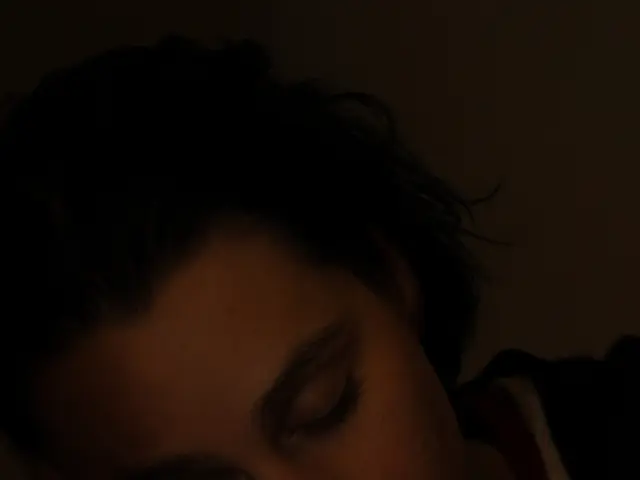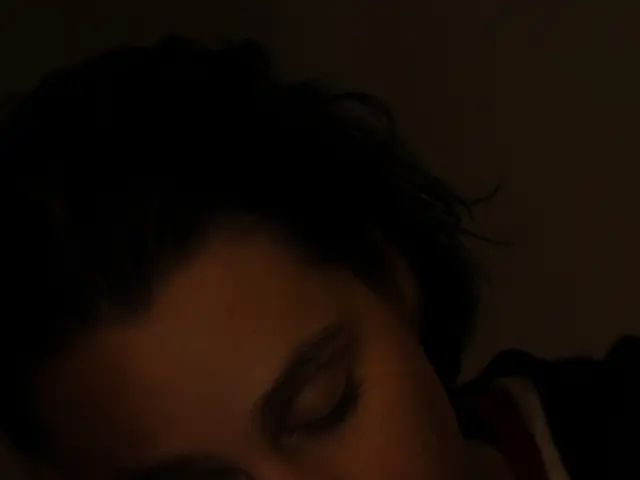Is It Advisable to Allow Infants to Self-Settle for Sleep?
Sleep Training and the "Cry It Out" Method: A Modern Parent's Guide
Navigating sleep training as a parent is a thorny issue, with heated debates surrounding one popular technique - the "cry it out" method. This method encourages parents to allow their babies to cry for specified durations before offering comfort, with the goal of teaching self-soothing and independent sleep. While this approach may work for some, the question lingers: is it doing our little ones any harm in the long run? Let's delve into the science, the controversies, and the alternatives that can help parents make informed decisions.
Infant Sleep Patterns: Nature versus Nurture
Babies' sleep patterns vary significantly from adults'. Newborns typically snooze for 14-17 hours a day, yet sleep in short cycles, lasting mere 50-60 minutes. These frequent awakenings help them feed and survive during their fragile early stages. As babies grow, their sleep cycles gradually lengthen, often enabling longer, uninterrupted sleep by the time they're 4-6 months old.
However, not all infants become model sleepers naturally. Many struggle with nighttime wakings and difficulty settling. The quest for solutions often leads parents to investigate sleep-training techniques like the "cry it out" method to promote independent sleep. To understand the implications of this approach, we must first familiarize ourselves with the science behind infant sleep, stress responses, and attachment.
The "Cry It Out" Approach: Science and Controversy
The "cry it out" method, popularized by Dr. Richard Ferber and his concept of graduated extinction, allows babies to cry for progressively longer intervals before offering comfort. The ultimate objective is to teach self-soothing, instilling healthy sleep habits over time. Supporters laud this method for effectively reducing night wakings and improving overall sleep quality, while critics express concern over its potential impact on emotional and psychological well-being.
Research on the "cry it out" method yields mixed results. Some studies suggest that sleep training doesn't lead to long-term harm, focusing on emotional growth and self-soothing capabilities. However, other research emphasizes the importance of mitigating stress during sleep training, acknowledging that healthy emotional development requires a delicate balance of self-reliance and responsive care. Factors like a baby's age, temperament, and the consistency of caregivers' responses greatly impact the effectiveness and appropriateness of this method.
Stress and Cortisol: Short-term Stress versus Long-term Harm
Crying releases cortisol, the stress hormone. Short-bursts of cortisol are natural responses to temporary stress, promoting resilience and emotional growth. However, extended, frequent exposure to high cortisol might potentially impact brain development, particularly in regions related to stress response and emotion regulation. While short periods of crying during sleep training are unlikely to cause significant long-term harm, especially when paired with loving daytime care, it's essential for parents to closely monitor their baby's emotional well-being during the sleep-training process.
Attachment and Emotional Development: The Power of Love and Consistency
Attachment, the deep emotional bond that forms between a baby and primary caregivers, develops through consistent, compassionate responses to the baby's needs. While worries persist that letting a baby cry may harm this bond, research reveals that strong attachment is primarily shaped by overall quality of caregiving, not isolated crying incidents. Gentler sleep-training approaches, which offer reassurance while allowing the baby to practice self-soothing, align well with attachment-centered care.
Alternative Sleep-training Methods: Choosing What Works for You
For parents uncomfortable with the "cry it out" approach, several alternative methods exist that prioritize minimizing stress, fostering strong attachments, and promoting healthy sleep habits. Examples include the gentle Ferber method (which gradually checks on the baby to offer reassurance) and the chair method (which involves gradually moving away from the crib over several nights). Parents may also opt for room-sharing or co-sleeping, ensuring immediate comfort and keeping tabs on their baby throughout the night.
Balancing Need and Well-being: Caring for Babies and Parents
The ultimate decision about sleep training, whether using the "cry it out" method or alternatives, must take both baby's and parents' needs into account. Chronic sleep deprivation can negatively affect parents' ability to provide loving care during the day. Sleep training can serve as a practical solution for many families, alleviating sleep issues and boosting overall family well-being. Parents should feel empowered to choose a method that aligns with their parenting style and values while providing the emotional support baby needs to thrive.
A Final Word: Loving Comfort and Healthy Sleep
The question of whether the "cry it out" method harms babies centers on individual babies, family circumstances, and a caregiver's overall approach. While the method has been shown to have significant benefits for many families, it's crucial to understand its implications and tailor the approach to the unique needs of each baby. By prioritizing love, emotional support, and flexibility, families can navigate sleep challenges with confidence, fostering a healthy, loving relationship that nurtures both the baby and the parents.
- By delving into the science behind infant sleep, stress responses, and attachment, we can better understand the implications of the "cry it out" method for the emotional and psychological well-being of our little ones.
- Alternative sleep-training methods, such as the gentle Ferber method and the chair method, prioritize minimizing stress, fostering strong attachments, and promoting healthy sleep habits without exclusively relying on the "cry it out" approach.
- The ultimate sleep-training decision should balance both baby's and parents' need for rest, considering the unique circumstances of each family, with the goal of boosting overall family well-being and nurturing a healthy, loving relationship.
- The "cry it out" method, though effective for some, raises questions about its long-term effects on a baby's health and mental-wellness, especially regarding their stress response, emotional development, and attachment.








